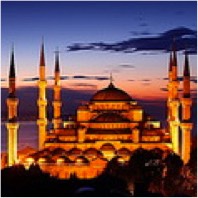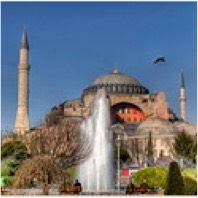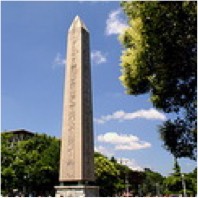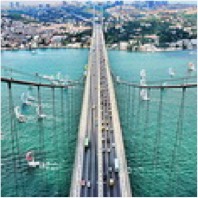Golden Horn

The Golden Horn is a narrow inlet dividing The European part of Istanbul into two and forming the natural harbor that has sheltered Greek, Roman, Byzantine, Ottoman and other ships for thousands of years... It has been used since the establishment of the city as a safe harbour which is 8km longIt has 4 bridges and the fifth one is currently under construction; the oldest one is Galata Bridge. The view of Istanbul from this bridge is so beautiful. Galata Bridge connects Eminonu and Sirkeci to Karakoy and Beyoglu. Galata Bridge and its vicinity is one of the most dynamic and colourful part of Istanbul. Many of the churches and synagogues as well as the Austrian, German and Greek schools still function. Galata tower is also very famous in Galata district. It has a lovely restaurant and night club overlooking the harbour and the entrance to the Bosporus at the top of it.
Locals call golden horn as a “Halic” which means The Bay of Istanbul. Golden Horn is a European name of it. Its name comes from the colour of the water when at sunset it shines with a gold colour because of the reflection of the sun or same people believe that Golden means fertile because 2 streams draining into it and there is great variety of fish here. Horn comes from the shape of it. Many factories, shipyards and other businesses were established along the shores of the Golden Horn in the 1950s with the population explosion and ineffective building laws so it became an ugly storage of grey city-sewage and industrial waste. All these are contributed heavily to the pollution of Golden Horn’s waters and also deterioration of the once scenic area with a terrible smell. Later on after 1983, pollution has been controlled, more than 4 thousand factories, houses etc have been torn down and replaced by green parks. Today it looks very nice with its magnificent view and people can fish here.
Here was an old trading harbour and a popular residential area during the Byzantine period. Its entrance was blocked by a huge chain to stop unwanted ships to enter. During the Ottoman period it was largely inhabited by Jewish immigrants from Spain. The mixtures of Armenians, Greeks, Gypsies and Turks living along its shores reflected the city's colorful ethnic mosaic.
In the beginning of 16th century Leonardo da Vinci projected a bridge to be built over the Golden Horn for the sultan. It was intended to be a single span of 240 meters (787 feet), 8 meters (26 feet) wide, and 24 meters (78 feet) high from the water, but it was never built.
In the first half of 18th century the Golden Horn was famous for its tulip gardens where upscale people came to enjoy and row with their boats at the romantic sunset. Many poets called it as "Sadabad" in their poems, or "place of bliss". Later on, Cibali cigarette factory was built in 1880 followed by other factories, which today houses a private university, and the Golden Horn was industrilized.
Fener and Balat are old neighborhoods of the Golden Horn, with traditional old wooden houses, Byzantine churches, and a couple of old synagogues belonging to the first Jewish community who was settled here. The Orthodox Patriarchy resides here as well.
There was no bridge over the Golden Horn before the 19th century. Small boats provided transportation between the two shores. The first Galata Bridge, which connects present day Karaköy to Eminönü, was built in 1836, rebuilt in 1845, again in 1912, and lastly in 1993. The Unkapani (also named as Atatürk) Bridge further up the Golden Horn handles the flow of traffic between Beyoglu and Saraçhane. The third one over the Golden Horn is called the Halic Bridge with the highway passing thru.







